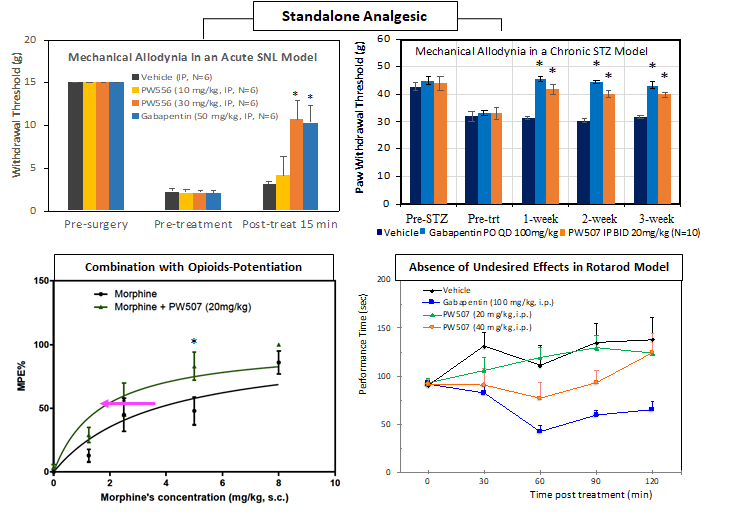
Invention Summary:
The sigma 1 receptor (S1R), a molecular chaperone protein located in the endoplasmic reticulum and plasma membranes, plays important roles in various pathological disorders including pain. The potential commercial applications of novel S1R antagonists are twofold: 1) as stand-alone therapy for the treatment of chronic neuropathic pain; 2) as combination therapy with opioids for the treatment of moderate-to-severe pain but with significantly fewer and less serious adverse effects.
Rutgers researchers have developed a new class of compounds, with the lead molecules named PW507 and PW556, that exhibit: (1) potent S1R binding affinity (Ki in sub-nM), (2) high selectivity for S1R over S2R and other targets, (3) favorable in vitro ADME/Tox properties, (4) good brain permeability and oral bioavailability, (5) negligible CNS toxicity and general toxicity in rats, (6) dose-dependent analgesia in vivo in rodent models of neuropathic pain such as the spinal nerve ligation model and STZ-induced neuropathic pain model, and (7) significant potentiation effect (3 fold) of opioids’ analgesic effects in a mouse model of acute pain.
Market Applications:
- Treatment for pain
- Treatment for substance abuse
- Combination with opioids to reduce opioid dosage and its adverse side effects
Advantages:
- Potent analgesic effect
- No addictive potential
- Negligible side effects
- Excellent ADME/Tox properties
- High CNS penetration
- Oral bioavailability
Intellectual Property & Development Status:
Patent pending and patent publication: PCT/US2019/066048. Available for licensing and/or research collaboration.